Public Law – Holiday Edition
As we come to the end of a year like no other and look forward to the holidays, we farewell the year with a bumper edition of Public Law. Whether it is a quick and easy fruit cake for those of us who have run out of time, an update on how we can stay connected with each other and our communities or highlights about recent legal developments, there is something for everyone. We wish you and your loved ones a safe and happy holiday season.
 Kathryn Howard
Kathryn HowardPartner
Head of Hall & Wilcox Public Sector group
and Editor of the Public Law newsletter Download Public Law – Holiday Edition 2020
The year that was
December 2020. What a year it has been. I have picked up the pen to write this, while listening to jazz-inspired Christmas carols and looking forward to the holidays with family and friends. What a privilege it will be, after the year of isolation we have experienced in Melbourne.

I have reflected a lot on what to write in this column, and a blank page has stared back at me for longer than I care to admit.
What are my takeaways from 2020? That ‘this too shall pass’. That we never know what the future holds, so let us appreciate the present moment. That there is no utility in clinging to, or resenting, the past. That a flower blooms by simply being. That behind the dark clouds, there is always blue sky.That below choppy waters, there is always stillness. That the sight of children playing in a park, and grandparents embracing their grandchildren for the first time in months, swells my eyes with tears. That the little things in life – a coffee with a friend, the sound of my horse’s neigh, a hug – are the big things. That slowing down enhances experience, not diminishes it. That we as humans need each other, as breath is to life.
As we come into these holidays, may we treasure the joy of being together, be comforted by the memories of happy times with those who can’t be with us and reach out to those around us, so that no one has a ‘silent night’ this holiday period. May we all share the gift of conversation. To hear Sam Neill say it better than I ever could, please watch this short video on the R U OK? website: ‘Don’t let it be a silent night – give the gift of conversation‘.

 Kathryn Howard
Kathryn HowardPartner
Head of Hall & Wilcox Public Sector group
and Editor of the Public Law newsletter
A charity for men and social connection
By David Pointon, The Men’s Table Co-Founder
Twelve men gather in a private room at their local pub on the first Tuesday of the month to share a meal and a drink – but that isn’t why they came together. They meet to share their highs, lows and challenges in their daily lives. They are building safe relationships where emotions can be aired, and each man is heard and accepted as a valued part of this small community.
This model is the essence of The Men’s Table. It was started by 12 men from a business networking group in 2011, and they continue to meet monthly as the founding Table, MT1. Since then, it has grown steadily, with a new Table launching in Melbourne becoming MT20.
The importance of men gathering in a supportive setting has taken on even greater significance during 2020 with the challenges of COVID-19, given heightened issues of isolation and mental health.
Participation is free, so that all men can have ready access, and just pay for their chosen food and drink at the venue.
Some years ago, I was given sage advice from a senior Government bureaucrat who told me, ‘Sectors (and industry) should lead, and government should enable.’ This has rung true in our early experience as a startup NFP.
Through a chance meeting with Christine Morgan, CEO of the National Mental Health Commission, the Commission supported The Men’s Table to conduct an evidence-based Model of Care research project, completed in June 2020. The project allowed us to validate and continue leading with our model of peer-to-peer, community-based social connection for men as a preventative mental health and community-building initiative. Meanwhile, the Commission gets the benefit of receiving evidence-based data that can be shared widely.
Governments are open and receptive to partnerships, and so now we are in dialogue about how our model might support further evolution and research in areas affected by crisis, be they COVID-related lockdown or bushfire and drought affected regional communities.
In applying to the Australian Charities and Not-for-profits Commission (ACNC) for charity status, and working closely with our advisory Board members, Jacqui Barrett from Hall & Wilcox and Andrew D’Adonna from PwC, we were struck by the ACNC officer declaring that they like to operate as a ‘warm agency’. We certainly found this in the helpful exchanges required in order to fulfil the charitable status obligations.
Having won a Woollahra Council grant, we now also see this enabling role taken up at local government level. We are working closely with council officers to spread the word among local men and foster community and social connection.
We want to continue leading with our simple yet unique model, by encouraging more men to step into men’s work, and seeing many more Tables launch around Australia. We will continue to seek ways of working with government who can enable this to happen.
See The Men’s Table website to find out more or join a table.
Bec Shelley’s Boiled Fruit Cake
Bec Shelley, a partner in our Canberra office who leads our Commonwealth Government practice,
is a busy baker in the lead-up to Christmas. A family favourite is her boiled fruit cake.

2¼ cups (375g) sultanas
1½ cups (250g) chopped raisins
1½ cups (250g) currants
½ cup mixed peel
¾ cup halved glace cherries
¼ cup chopped glace pineapple
¼ cup chopped glace apricots
250g butter
1 cup brown sugar, firmly packed
½ cup brandy
½ cup water
5 eggs, lightly beaten
1 tablespoon treacle
2 teaspoons grated orange rind
1 teaspoon grated lemon rind
1¾ cups plain flour
1/3 cup self-raising flour
½ teaspoon bicarbonate of soda
Combine fruit, butter, sugar, brandy and water in a saucepan.
Stir constantly over heat without boiling until sugar is dissolved.
Bring to the boil, reduce heat, simmer covered 10 minutes. Transfer to large bowl, cool to room temperature.
Grease a deep 23cm round (or deep 19cm square) cake pan, line base and side with two thicknesses of paper, bringing paper 5cm above edge of pan.
Add eggs, treacle and rinds to fruit mixture, stir until combined.
Stir in sifted dry ingredients. Spread mixture evenly into prepared pan.
If desired, decorate with glace cherries and almonds. Bake in slow oven for about 2½ hours. Cover cake with foil, cool in pan. It will keep for up to three months.
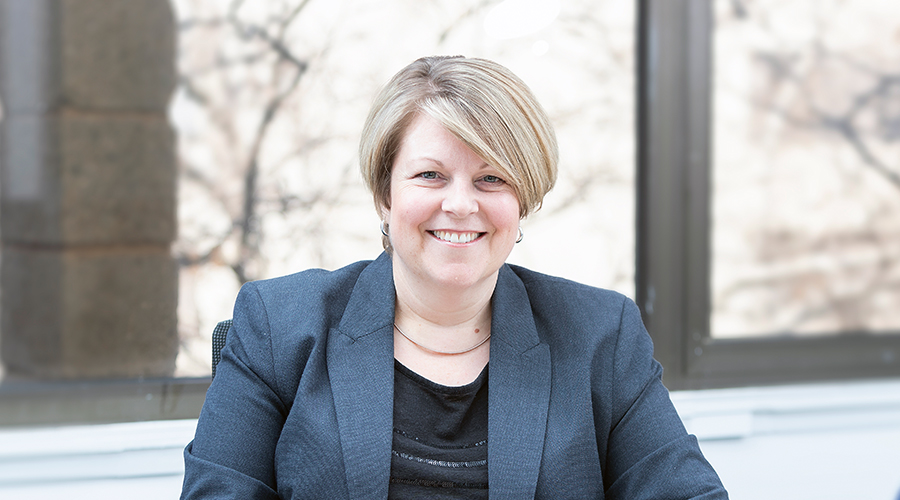

Rebecca Shelley
Partner, Financial Services & Insurance
Ground leases: what’s in it for the government?
What do Barangaroo in NSW and Melbourne Park in Victoria have in common? Ground leases!
In the context of the public sector, a ground lease is a unique lease structure that enables asset-rich governments to unlock the value of government-owned land without having to dispose of land.
Ground leases are effective in many scenarios, such as where the government:
- is unable to dispose of an asset (eg for policy reasons);
- does not have the funds to develop;
- is unwilling to take on development risk; or
- wants to encourage development of a particular asset or area.
A ground lease involves the government granting a tenant, eg a developer, a fixed long-term lease (generally 20 years or more) over government-owned land. The tenant takes on the risk of developing the asset, while the government receives a ground rent and retains ownership of the asset.
A unique characteristic of ground leases is that the tenant bears the entire cost of constructing, maintaining and managing the buildings and improvements during the term of the ground lease. The developer effectively owns the asset during the term and is responsible for all of the obligations associated with owning the asset. On expiry of the term, the improvements on the land will revert to the government, subject to the arrangements agreed between the parties.
The long-term nature of the ground lease enables the tenant to benefit from the large capital expenditure, which it invests in the asset. The government, on the other hand, can passively participate in the investment but does not take on the risk or capital expenditure.
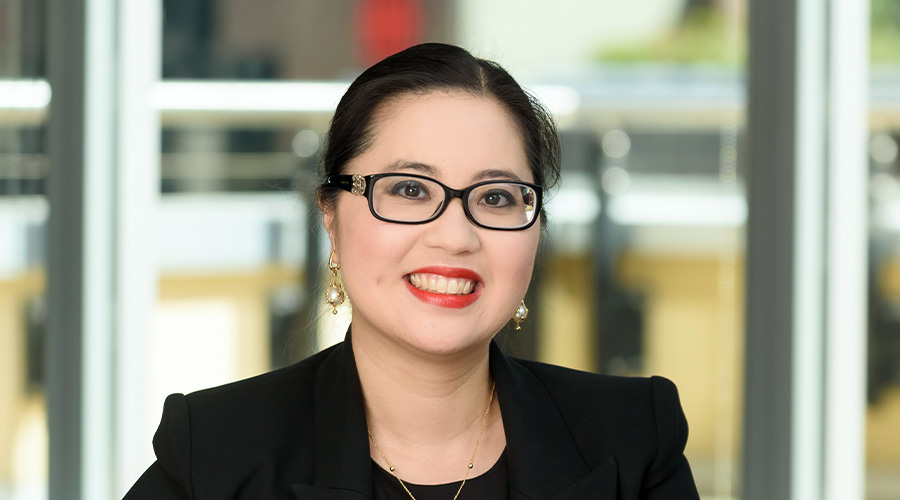

Kitty Vo
Partner, Property & Projects
Making Melbourne great again

By Lord Mayor of Melbourne, Sally Capp
The eerie images of deserted Melbourne CBD streets during Victoria’s stage 4 restrictions were confronting, especially for those of us more used to a city of busy cafes, shops and streets. How to revitalise Melbourne’s CBD post lockdown was the focus of an armchair discussion between Lord Mayor of Melbourne Sally Capp and Planning & Environment Partner Meg Lee on 18 September 2020.
In the virtual event for our clients as part of our Connecting You series, held during Melbourne’s lockdown and just before the City of Melbourne council elections, Cr Capp highlighted that the CBD daily traffic of 1 million visitors was down by 90%, with a huge impact on retail, hospitality and commercial businesses. A report by PwC on the economic impacts of COVID-19 on the City of Melbourne has forecast a $110 billion hit to the local economy over the next five years.
‘This is not just a local issue,’ Cr Capp said. ‘It’s a state issue, as we’re the engine room of the state economy, but it’s also a national issue because of the way our economy contributes to the national economy. We’ve been disproportionately impacted. We need a proportionate response.’
Cr Capp outlined some of the initiatives the City of Melbourne and Victorian Government were planning to bring the city back to life. These included:
- reopening hospitality venues and reinvigorating both the city streets and venues by allowing alfresco dining on footpaths, streets and in parking spaces in new outdoor dining precincts.
- ensuring city streets, offices and public transport were COVID-safe.
- creating jobs by supporting the reopening of businesses and generating new jobs through investment in new business, construction and events.
- examining the future of mothballed buildings and whether these could be repurposed. In this regard, Cr Capp is working with CEOs of major businesses to explore ideas for conversion to artist spaces and affordable housing.
Since the event, Victoria’s COVID-19 restrictions have eased and Cr Capp has been re-elected as Lord Mayor. A ‘Let’s Melbourne Again’ campaign, a collaboration between Melbourne’s creative and business community, has launched, with a series of initiatives to encourage Melburnians to get back into the city and help it get back on its feet. The Committee of Melbourne, of which Hall & Wilcox is a proud member, supports the program.
The discussion also explored how Cr Capp has coped with the stresses of leadership in a time of unprecedented change and crisis and her personal tips for ensuring her well-being.
Tune in to be inspired. Access the on-demand event.
A client’s perspective
Through her role as a Flexible Working Day Ambassador, Fay Calderone met fellow Ambassador Mark Morris, Director of Ministerial Services for the Queensland Government Department of Premier and Cabinet. Fay caught up with Mark to discuss his passion for increasing the take-up of flexible work and the likely challenges ahead.
What do you think we can do to increase the take-up of men for parental leave and flexible work?
I’m very passionate about making a change in this space. I want to show the people around me that it can be done. Hopefully that will give people confidence to try it themselves, and that, in turn, gives other people confidence, and it builds from there.
I will say that it’s not easy, but that doesn’t mean that it’s not worth doing. We need people who are willing to step up, to challenge, and have the tough, respectful, robust conversations about what needs to be done to drive change.
It’s not just about the gender balance. It’s also about supporting leaders who are also parents. The demands of parenting and the demands of leadership roles often challenge each other. But there are little things you can do, like leaving loudly. Be prepared to stand up and say ‘I’m leaving early because my family…’. And children are not the only reason that justifies flexible work. It could be another commitment, like soccer or guitar lessons. If it’s important to you, we should be supportive of that. Not judge whether or not we think it is important.
Flexible working needs to be front and centre and not hidden to show people that it can be done better.
What challenges for employers and leaders do you see ahead?
It’s going to be a challenging 12 months ahead in many ways. It will be challenging in some ways that we don’t, or can’t, anticipate yet. Because things are changing so quickly, challenges are emerging all the time.
As restrictions lift and there’s a transition period in the ways in which we work, that creates new challenges that we didn’t have when everyone was working from home. Now people are working to different schedules, some are in the office, but some people don’t see each other face to face because they work different days. I think some people are feeling they don’t have the skills to manage a virtual or a remote team, and yet it’s clear that an element of this will remain in the future.
Is there anything you’re focusing on developing, in you or your team, that you may not have before COVID-19?
I recently watched a webinar on high-performing teams, delivered by Gilbert Enoka, the All Blacks mental skills coach. Something he said that struck me was that if you’re trying to improve your team 100%, don’t try one thing. Try a hundred things and try to nudge them slightly forward, even if it’s only by 1%. Even if 50% of them fail, you’ll still nudge your team forward by 50% in terms of overall net performance.
It really struck a chord with me because a lot of the time, especially in the public sector, we try not to do too much at once.
We do one thing and then we wait and do something else. Sometimes those things fail and don’t work, and then you’ve lost valuable time.
So we are doing lots of things, which I’m sure other organisations are doing, like weekly bookend meetings about how the week is looking and how the week has been. We do a weekly walking meeting and we have monthly performance conversations where we are making performance a healthy, positive conversation. It’s not about whether a person is performing but about how the performance of the business function is going. It has a business improvement mindset but with a human approach.
To watch more of the conversation between Fay and Mark, see the video on our website, which is part of our Connecting You series.


Fay Calderone
Partner, Employment
Bushfires, trauma and fundraising: Regeneration and regulation
By Frank Hinoporos, Partner
Slowly, but steadily, fundraising regulation is being reformed, with calls for its modernisation growing.
Some reform has been successful, such as longer licence timeframes and less double up of reporting to state or territory bodies where the entity is registered with the Australian Charities and Not-for-profits Commission (ACNC).
This removes some of the administrative burden from the shoulders of charities and not-for-profits, so they can focus time and money where it matters most. However, more comprehensive reform could eliminate unnecessary complexity and red-tape and alleviate the compliance burden generated by the existing regulatory framework.
To run a fundraising campaign online quickly escalates in complexity and administration. Fundraising regulation at both federal and state and territory levels is patchwork. Ensuring compliance can be difficult, time-consuming and prohibitively expensive, particularly for small charities and not-for-profits.
Online crowdfunding platforms operate globally, often not headquartered in Australia, which makes the ambit of fundraising regulation unclear.
Many high-profile Australians were spurred to lend their celebrity to online public fundraising campaigns during the catastrophic bushfires over the 2019-20 Australian summer. Think of Celeste Barber’s hugely successful Facebook campaign, which raised more than $50 million and ultimately required judicial advice in relation to the distribution of the funds raised. Or the campaign championed by Magda Szubanski and Will Connolly (who came to fame through the infamous Fraser Anning egging incident).
We provided pro bono advice and support to Magda and Will, who set up a GoFundMe page to raise funds to provide long-term relief for people experiencing trauma and mental health issues in bushfire-affected communities.
The funds raised are now being channelled to ‘Regeneration’, a project spearheaded by Ian Drayton, Associate Professor Jordan Williams and Dr Miranda van Hooff and delivered collaboratively by the University of Canberra and the Adelaide-based charity, The Hospital Research Foundation Group.
Regeneration will provide mental health support to communities in South Australia, New South Wales and Victoria through creative arts-based trauma relief programs.
While we wait for further reform in this area, it is great to see projects like Regeneration successfully channel support to those who need it most.
Human rights during COVID-19
In response to the COVID-19 pandemic, our federal and state governments quickly implemented legal changes that had a wide impact on all of us. While the swiftly imposed restrictions did assist with the suppression of the virus, the rapid changes and differences between places resulted in much confusion as to what was permitted at any given time. Of particular concern was whether some of the measures might infringe upon human rights.
Grata Fund, a human rights focused organisation, sought Hall & Wilcox’s pro bono assistance to develop the COVID-19 Law Monitor. The Monitor was developed for individuals, social justice organisations and journalists to track the frequently changing COVID-19 measures introduced by governments that impact on civil liberties and freedoms. Throughout 2020, we have provided the Grata Fund with a daily breakdown of all the relevant rules in each state and territory.
This project is just one of the new opportunities to provide assistance to the community that 2020 created for our Pro Bono & Community practice. Read more stories about the work we’re doing in the community in ‘Respect Respect: Pro bono report FY2020‘.
‘Women Briefing Women’ initiative
We are delighted to partner with the Women Barristers’ Association (WBA) for the ‘Women Briefing Women’ initiative. This program connects barristers and solicitors on an intellectual and social level with a view to connecting practitioners with female barristers of all levels, who they might not already know.
Barrister Gayann Walker said the program ‘was born out of a pandemic panic about the lack of networking events, particularly for women with caring responsibilities’.
We recently hosted three networking sessions. Led by Ms Walker, each session was tailored on a key area of law – insolvency, public inquiries and commercial – with discussion focused on sharing current industry insights as well as getting to know each other.
‘The small group videoconference networking sessions transcended “normal” life and provided a flexibility that supports professional women,’ Ms Walker said. ‘The ease of remote attendance meant that our members didn’t have to choose between a work event or family responsibility. The sessions were beneficial for all attendees, providing introductions for barristers who might not otherwise have the opportunity to network and benefiting the solicitors by potentially increasing their options of barristers to brief. The sessions were not only about the sharing of industry insights but also provided a social outlet which was much needed, especially during lockdown.’
Kathryn Howard, Partner and Public Sector Industry Group Leader, said ‘Hall & Wilcox is proud to partner with the WBA. These sessions provide valuable relationship building, and have the intention of effecting real change in a COVID-safe environment.’
Hall & Wilcox welcomes future collaboration with the WBA in 2021.
Employment: supporting employees wherever they work
The COVID-19 pandemic has changed how we live and work. For many employees, this has intensified mental health risks, particularly those who are juggling multiple demands just to get through each day.
‘Thrive at Work at Home’, a Centre for Transformative Work Design study of more than 1000 participants about how workers were affected by the COVID-19 pandemic, found that almost 40% of those working from home most days reported high or very high levels of psychological distress.

While employers can’t manage all factors that may negatively impact the mental health of employees, employers are obliged to control risk factors associated with work and the working environment.
Specifically, employers must provide and maintain a working environment that is safe and without risks to health and safety for employees, so far as is reasonably practicable. This obligation extends to risks associated with psychological health (such as stress and anxiety) and applies when employees are required to work outside of their normal workplace, which during COVID-19 has mostly been from home.
To meet these obligations, employers need to:
- identify hazards to employees having good mental health;
- assess the risk of harm associated with the identified hazards; and
- implement measures to eliminate or reduce the risks, so far as is reasonably practicable.
Some practical measures employers can take include:
- staying up-to-date with government directions and health information from relevant authorities and communicating this with employees, particularly as situations change;
- identifying employees who might be at ‘high risk’ of developing stress, anxiety or other mental health conditions, and proactively suggesting measures that may be able to assist them, such as a more flexible approach to when and how work is performed and informing them of what leave may be available to them, particularly if they have carer responsibilities to meet;
- having regular and meaningful communications with employees – asking how they are coping and what further support could be provided;
- for employees who are struggling, determining what can be done to provide targeted assistance, for example, referring them to support services, such as an employee assistance program and assigning a contact person that can keep in touch with them;
- looking at alternative ways to keep connected and preventing isolation, such as offering online team meetings, social interaction activities (eg trivia, cooking classes, etc) and fitness classes; and
ensuring acceptable workplace behaviour standards are upheld, notwithstanding the change in work environment and the increased use of technology for communication, including making workplace behaviour policies available to employees, training employees on acceptable workplace behaviour and quickly and appropriately addressing inappropriate behaviour.
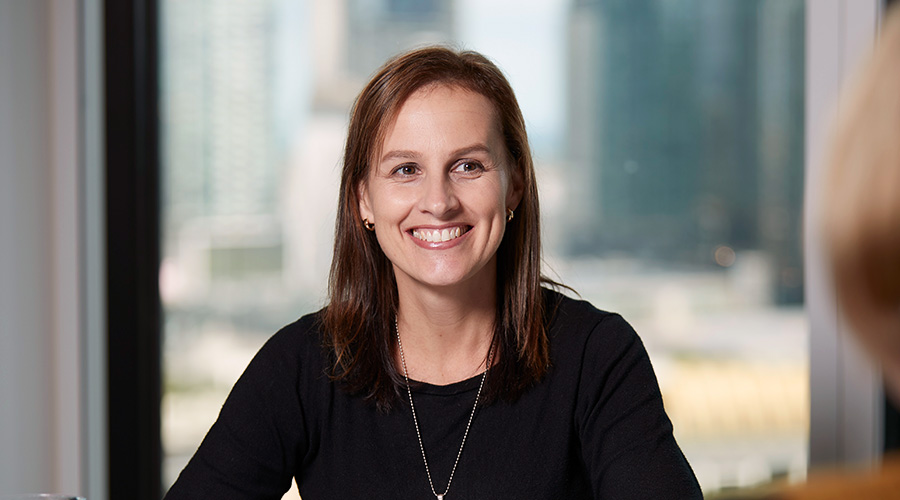
 Alison Baker
Alison BakerPartner, Employment
Technology: WFH and technology vulnerabilities
Working from home is likely to be a key part of business’s ‘new normal’. Technology enabled many of us to work productively from home during lockdown, but it can leave any IT vulnerabilities exposed. What technology risks does the WFH model present?
If your organisation is moving greater numbers of staff to a WFH model, consider:
- implementing new WFH IT policies;
- implementing a notifiable data breaches protocol;
- checking the adequacy of your data protection measures; and
- taking a strategic approach to technology procurement that looks beyond the contract for protection and focuses on the key legal issues in the contractual negotiations.
What organisations should do about technology risks
Government agencies collecting personal information have statutory duties to protect that information from unauthorised access, disclosure and loss. Generally, the law requires the protection to be ‘reasonable in the circumstances’, including for large-scale remote working.
Technology procurement
The pandemic has already created strong demand for new IT solutions to scale up remote working capabilities and to enhance cyber-resilience. The urgency has shortened procurement timeframes, swinging the commercial and legal balance in favour of technology vendors and away from customers.
In negotiating technology procurement contracts, customer organisations will have to take a strategic approach that prioritises the greatest issues of legal risk, including some of the key areas below.
Privacy and data protection
Ensure the terms of technology procurement contracts properly protect personal information and customer data in the hands of the vendor. An international vendor is unlikely to offer privacy and data protection that matches the requirements of Australia’s federal and state privacy laws.
In addition, customer organisations should conduct due diligence on the vendor’s practices and systems.
Liability limitations
Be wary of liability limitations drafted in the style found in the standard contracts of the major United States IT vendors.
These frequently exclude liability for ‘economic loss’ and ‘loss of bargain’.
In the Australian common law, ‘loss of bargain’ equates with expectation loss, which is the usual basis for a court to award damages for contractual breach.
If the vendor’s liability for ‘loss of bargain’ is excluded, a customer organisation may have no right to claim substantial damages to compensate it for the breach.
As well as exclusions of liability for ‘loss of bargain’, exclusions of liability for ‘economic loss’ should be removed, or at least qualified. Exclude only those types of losses you are content to exclude, and define them expressly – do not rely on fluid definitions of ‘consequential’ loss in Australian law.
Choice of law and jurisdiction
Stay local. An international vendor’s standard contract will typically specify that the contract is governed by foreign law and that the parties agree to submit disputes to a foreign jurisdiction. Where possible, amend the contract to specify local laws and the jurisdiction of local courts. Make sure your counter-party will accept service in Australia.


John Gray
Partner, Corporate and Commercial
Supply chain: Government provides a key link
Supply chain issues for both private and public enterprise arose during the COVID-19 pandemic. Particularly affected were businesses operating in critical supply chains, such as healthcare, pharmaceutical and food supply chains.

Both State and Federal governments committed substantial resources to establish (in some cases) secure and facilitate effective supply chains across multiple industries.
Governments’ efforts to support critical supply chains have identified gaps in the supply chains that need to be managed, ensuring goods and services continue to be readily available to the Australian public, and creating greater job security within those supply chains.
Protecting and maintaining supply chains in Australia is a key priority for both state and federal governments, and for businesses keen to avoid interruption or over-reliance on particular suppliers.
Some examples of government initiatives during the pandemic to enhance and secure supply chains include:
- sourcing and facilitating delivery of critical medical supplies and ventilators;
- securing supply of pharmaceutical-grade ethanol for medical and other health facilities for use in pathology services, sanitation and delivery of medical services;
- calling on local manufacturers of medical equipment and personal and protective equipment (PPE) to help meet demand;
- creating registers and networks to capture expressions of interest from Australian-based manufacturers and individuals looking to assist with supply of goods, services or knowledge, or creating a portal to manage supply chain shortages and identify gaps in the supply chain;
- assisting businesses to retool and change production lines to respond to demand for certain goods; and
- partnering with universities and industry to develop prototype ventilator solutions.
These examples highlight the important role governments play in supporting both private and public enterprise to operate both during disruption, such as the pandemic, and in the recovery.
While some activities were short term to deal with the immediate demands of the pandemic, some initiatives have a longer-term focus and are not just limited to providing funding to ensure existing businesses survive (although this is also very important).
It is pleasing to see governments at both state and federal level exploring opportunities to invest in new ways of working and methods of manufacture and to encourage innovation, particularly in the med-tech and biotech industries. For example, the NSW Government has been exploring ‘advanced manufacturing methodologies’ to reduce general costs of manufacture and creating more local job opportunities.
We will continue examining this topic in future Public Law editions, particularly the role governments play in stimulating innovation and technological advancements and creating job opportunities.


Jacqui Barrett
Partner, Corporate and Commercial
Hunter Business Awards
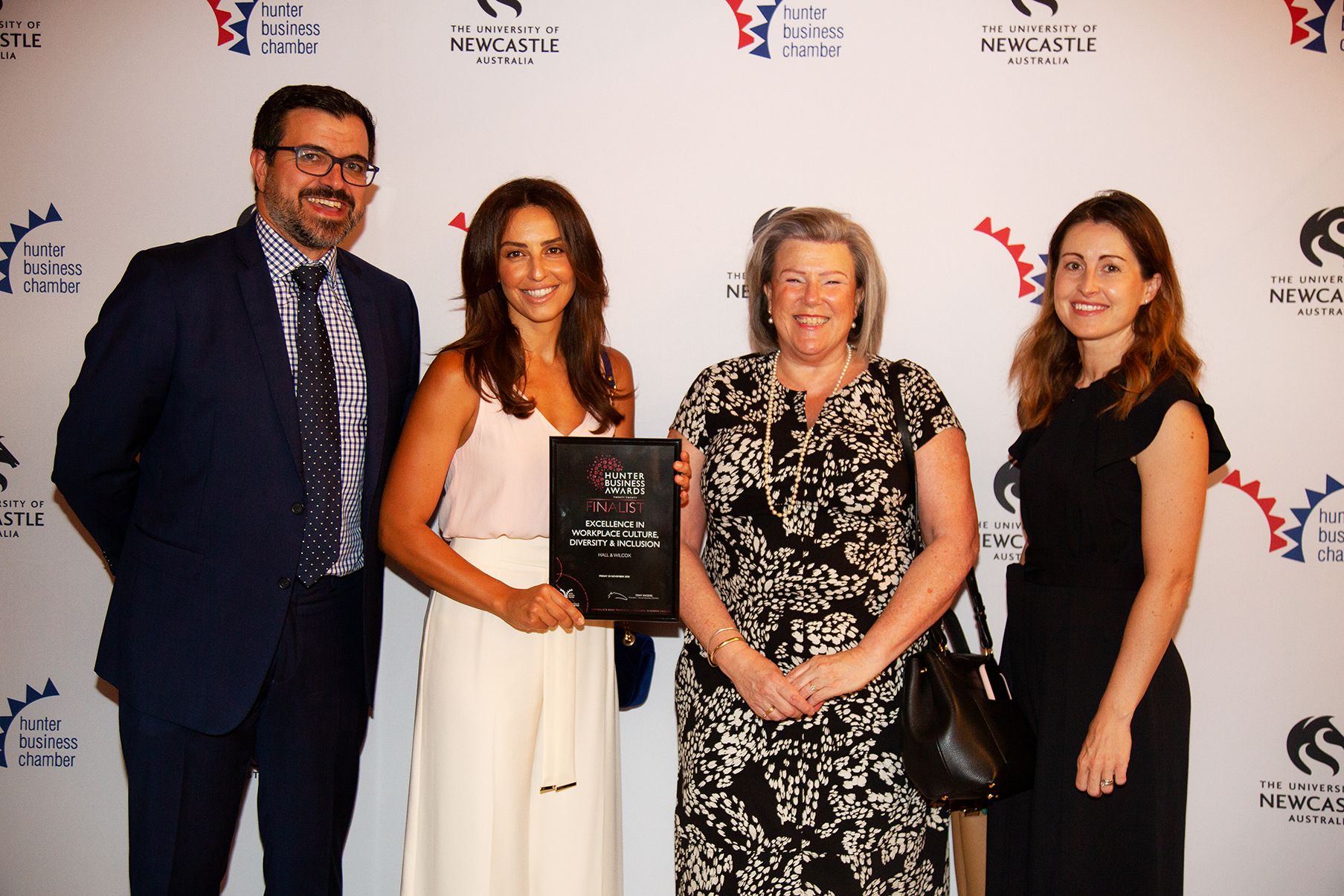
‘While thrilled to win, most importantly the award celebrates the importance of diversity and inclusion in organisational culture.’
Most of us want to work in an inclusive workplace where everyone feels welcome, respected and valued. We were delighted to see our workplace win the ‘Excellence in Workplace Culture, Diversity & Inclusion’ category at the recent Hunter Business Awards. The award celebrates a business in the Newcastle-Hunter region that has implemented strategies and initiatives to create a stimulating and supportive workplace environment that has a positive impact on its people and the organisation as a whole.
While thrilled to win, most importantly the award celebrates the importance of diversity and inclusion in organisational culture.
Book review
Transcendent Kingdom
By Yaa Gyasi
Gifty is a neuroscience PhD candidate undertaking ground-breaking research into the neural circuits of reward-seeking behaviour, specifically addiction and depression. Why do some people succumb to addiction while others are untouched? It is a question that has personal resonance for Gifty, as her older brother Nana died of a heroin overdose. She channels her pain into science to help deal with her loss and she hopes her research will help others like Nana.
Gifty’s parents immigrated from Ghana to Alabama when Nana was a baby. Her mother wanted to give her adored son the world and America beckoned as a land of abundance. But the fairytale did not eventuate. Gifty’s mother worked long hours in low-paying jobs while her father struggled with racism, with ‘how America changed around big black men’. He went back to Ghana for a visit and never returned.
Nana was a gifted basketballer who, after an ankle injury that would probably be treated in Australia with ibuprofen or Panadol, was casually prescribed OxyContin. It changed his path from potential scholarship star to dead addict.
Fiction is a powerful way to draw us into other worlds. In a year where the spotlight has shone on the cracks in US society, this novel shows how close to the edge many Americans live. Gifty’s family struggles financially and emotionally and the church to which they so rigorously adhere does not repay their faith. When tragedy strikes, there is no safety net to help them. In elegant prose that enlightens rather than lectures, Yaa Gyasi tells an emotionally searing story of a family devastated
by forces both within and outside their control. It had me reflecting on the damage that casual racism and structural inequality has on many people’s lives. The personal experiences of the story spoke to me in a way that media reports have not.


Melinda Woledge
Marketing & Communications Manager
Spotlight on social and affordable housing
How can we take the best of 2020 and move into a 2021 made stronger by our experiences?
We recently held a seminar for our public sector clients where our experts looked at what’s ahead in the areas of employment, technology, property and insolvency. In these articles, Partner Natalie Bannister outlines the benefits a funding boost for social and affordable housing will have in Victoria; Partner Katrina Reye looks at how COVID-19 impacted the sector, and what investment NSW is making; and Partner Rory O’Connor explains how Victoria’s ‘Big Housing Build’ program will work.
Victoria’s game-changing funding
Infrastructure spending is a traditional way for governments to kickstart a sluggish economy. Often the spending is on big ticket projects, such as roads and rail. If COVID-19 highlighted one thing, it is the vital importance of social infrastructure in keeping people safe and connected.
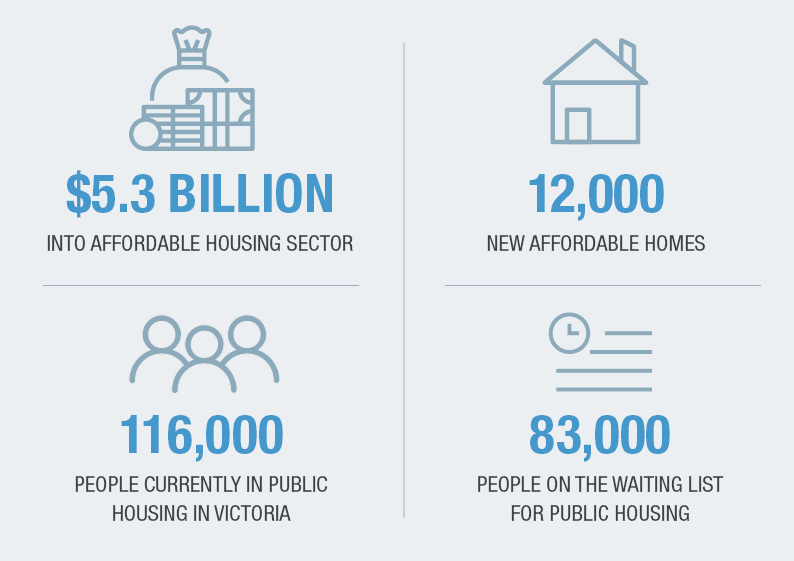
The Victorian Government recently announced a game changer: the injection of $5.3 billion into the affordable housing sector to build 12,000 new affordable homes over the next few years.
Social housing is a critical issue. Currently there are about 116,000 people in Victoria in public housing, with 83,000 people on the waiting list. Housing security is one of the key things that supports our communities as a whole, particularly families. If you don’t have a home, you don’t feel safe.
Not only will the project deliver new homes but it will achieve other positive public policy outcomes including supporting the construction industry by creating 43,000 jobs, creating apprenticeships and traineeships that will help support young people, many of whom have finished school or university this year and may be facing an uncertain future. It will deliver housing security for 1000 victims of domestic violence and 1000 indigenous people. With a quarter of the funding allocated to regional Victoria, it will also boost regional and rural areas.
Another advantage of this program of investment is that the money is being deployed in a variety of ways. Some is being spent to build public housing on publicly owned sites, some will fund the community housing sector to build social housing, and about $2.1 billion is being spent on public private partnerships. It’s fantastic that this project will give the public and private sector the chance to collaborate to devise innovative housing options.
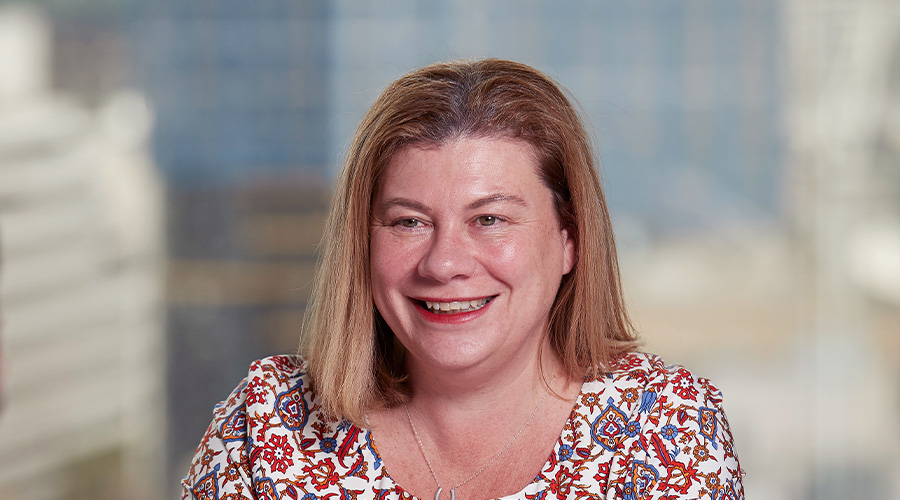

Natalie Bannister
Partner, Property & Projects
Victoria’s ‘Big Housing Build’
The Victorian Government will be kick-starting the ‘Big Housing Build’ (BHB) program by purchasing ‘fast-start’ projects and streamlining the approval of social housing projects through planning reform.
Rory O’Connor and Meg Lee, Partners in our Property & Projects team, are proud to have assisted the Department of Health and Human Services Victoria (DHHS) with the preparation of two planning scheme amendments (VC187 and VC190) as part of the BHB program.
These amendments, which have just been gazetted, will introduce new Particular Provisions into the Victorian Planning Provisions and all planning schemes to streamline the planning process and fast track approvals for developments undertaken by or on behalf of the Director of Housing and where funded by the BHB program.
The new homes will comprise more than 9300 new social housing properties and 2900 affordable and market housing properties, with 5000 new home commencements slated for each of the 2021-22 and 2022-23 financial years alone.
To add to the social and affordable housing supply quickly, $948 million of the investment will go toward working with the private sector to spot-purchase homes, projects in progress or ready to build.
Homes Victoria will be working with developers and construction firms to identify appropriate, existing housing developments it can acquire, provided the developments are up to a suitable standard and well-located. This may also include working with the private sector to identify suitable developments that may be partially complete, or which may not otherwise progress.
While Homes Victoria is interested in projects from all metropolitan and regional urban centres, it is inviting proposals located in 21 ‘priority local government areas’ that are in acute need for more housing to cope with demand: see the map.
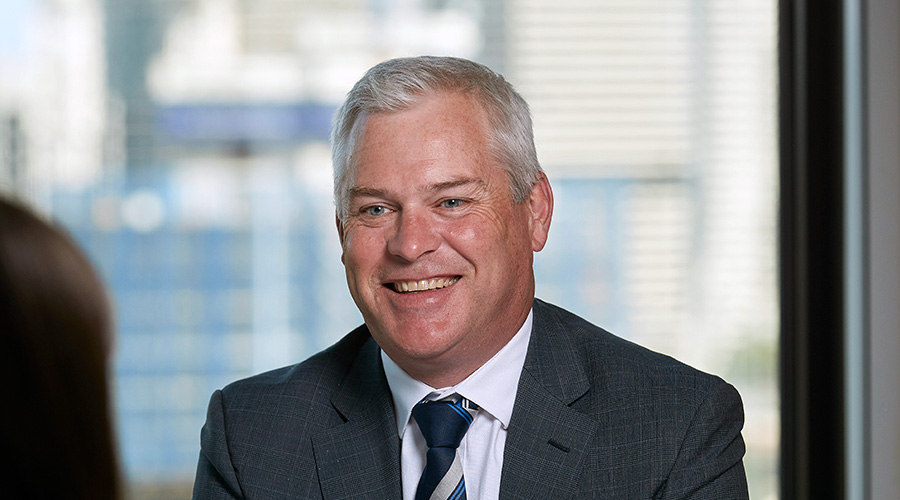

Rory O’Connor
Partner, Property and Projects
Social and affordable housing post-COVID in NSW
By Katrina Reye
Australia’s social and affordable housing sector was under pressure even before coronavirus, but the ‘COVID-19 recession’ caused rising demand for an already stretched system.
A lot is happening in NSW to redress this shortage. A joint federal and NSW government initiative, the Community Housing Renewal Program, has been launched through the NSW Land and Housing Corporation, the aim of which is to boost the supply of community housing projects. The emergence of the National Housing Finance and Investment Corporation (NHFIC) has been greatly welcomed and hugely successful. NSW-based community housing providers can also access NHFIC and institutional subordinated debt issued by industry super fund Cbus to develop new social housing, on government-owned land, under a build to rent model on a neighbourhood scale. These projects will not only increase housing supply, but will also have flow-on benefits to the broader economy.
But more is needed and history shows that it is direct government initiatives that have the most significant impact in times of economic upheaval. The additional $900 million investment in social and affordable housing in the recent NSW Budget is welcome, but it is fair to say the sector seeks greater investment to meet community need.
Hall & Wilcox has a strong commitment to help tackle the affordable housing and other specialist disability challenges facing Australia and to bring investment into the community. We look forward to continuing our work in this vital sector.
What’s on
Taking the best of 2020 and moving forward in the public sector
How can we move forward from the most unusual of years to a 2021 made stronger by our experiences? Our panel of experts shared their thoughts.
Panellists: Natalie Bannister, Fay Calderone, David Dickens and John Gray
Facilitator: Kathryn Howard
Where: Please click here to access the on-demand webinar.
A year in review: what can the Aged Care sector take away from 2020?
The Aged Care sector has faced significant challenges over the past few years, including the Royal Commission and COVID-19. How have these challenges shaped the sector, and what can we learn moving forward?
Presenters: Alison Choy Flannigan, Karl Rozenbergs and Tim Hicks, General Manager Policy & Advocacy LASA
Where: Please click here to access the on-demand webinar.
Retail hotspots of 2021: e-commerce, e-payments and underpayments
Consumer behaviour has been changing the future of retail for many years. The impact of COVID-19 on the retail sector has only accelerated the need and reliance on digital retail for the sector. Amid the Australian ‘shoptimism’, there are bigger questions about the future of retail.
So what does it look like?
Panellists: Elliot Cohen, Aaron Dearden, Camille Gray and John Gray
Where: Please click here to access the on-demand webinar.
Current issues in procurement and contracting in the health sector
As we navigate out of COVID-19 and into the ‘new normal’, governments may stimulate the economy with infrastructure projects, including health infrastructure.
Our panel of experts discussed the latest in procurement and contracting in the health sector.
Panel: James Doyle, Stryker; Fleur Katsmartin, Healthdirect Australia; Shiraz Lubke, Northern Health; Paul White, New High Consulting; John O’Kane and Alison Choy Flannigan, Hall & Wilcox
Where: Please click here to access the on-demand webinar.
Managing cyber incidents in an increasingly digitalised world
Cyber incidents are one of the biggest threats facing organisations. COVID-19 has increased the potential for a cyber incident, with many businesses relying heavily on remote and digital systems to keep operating. What can you do to minimise the risks?
Panel: Richard Johnson, TSA Group; James Lacey and Bastien Treptel, CTRL Group; Alison Baker and John Gray, Hall & Wilcox
Where: Please click here to access the on-demand webinar.
Workforce challenges for the aged care and disability sector
The aged care and disability workforce has encountered numerous challenges over the years, which have only been amplified by the impacts of COVID-19. The current climate has made it harder for providers to reconcile the workforce challenges and industry obligations they are facing.
Presenters: Fay Calderone and Alison Choy Flannigan, Hall & Wilcox; Kerry Stubbs, CEO Northcott
Where: Please click here to access the on-demand webinar.
